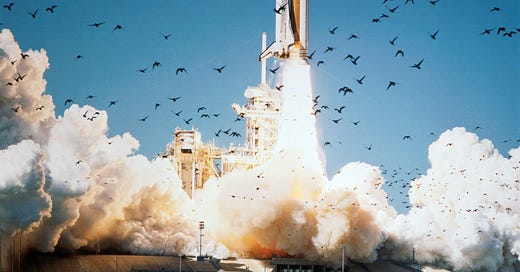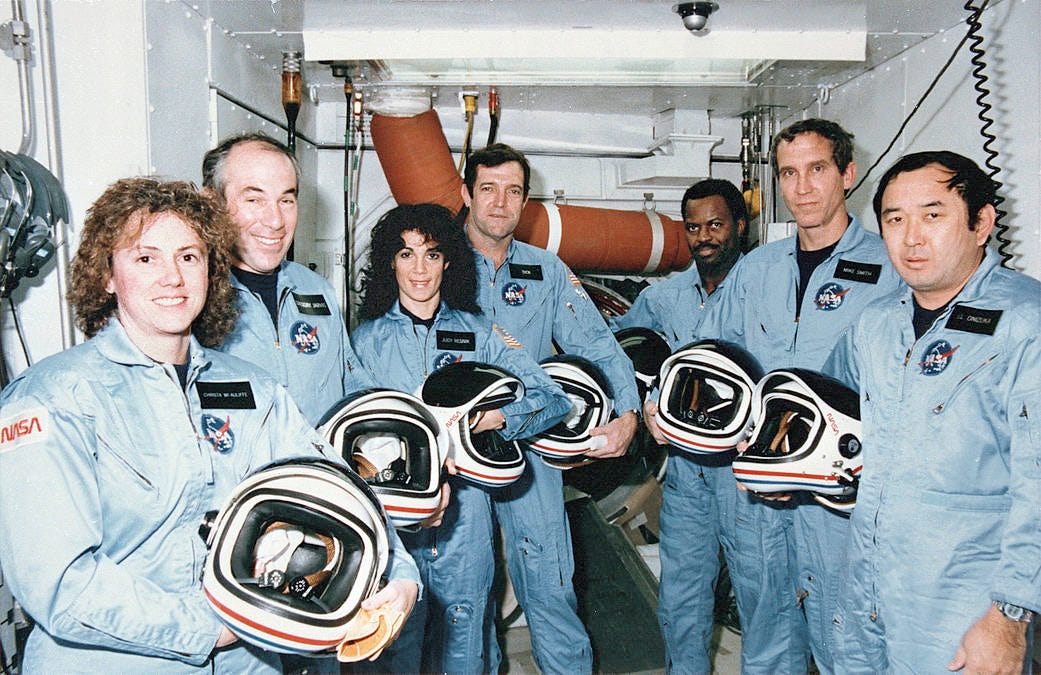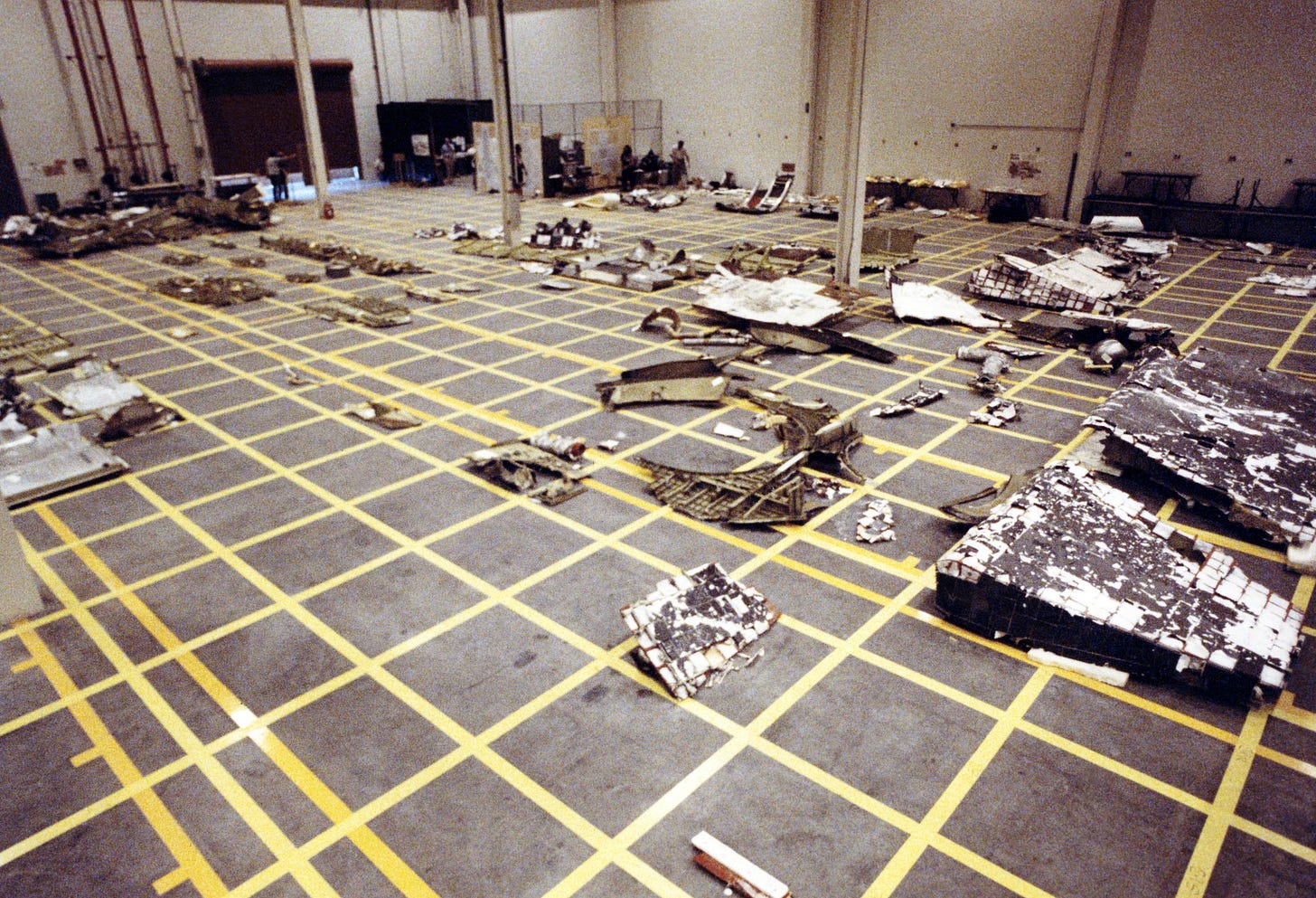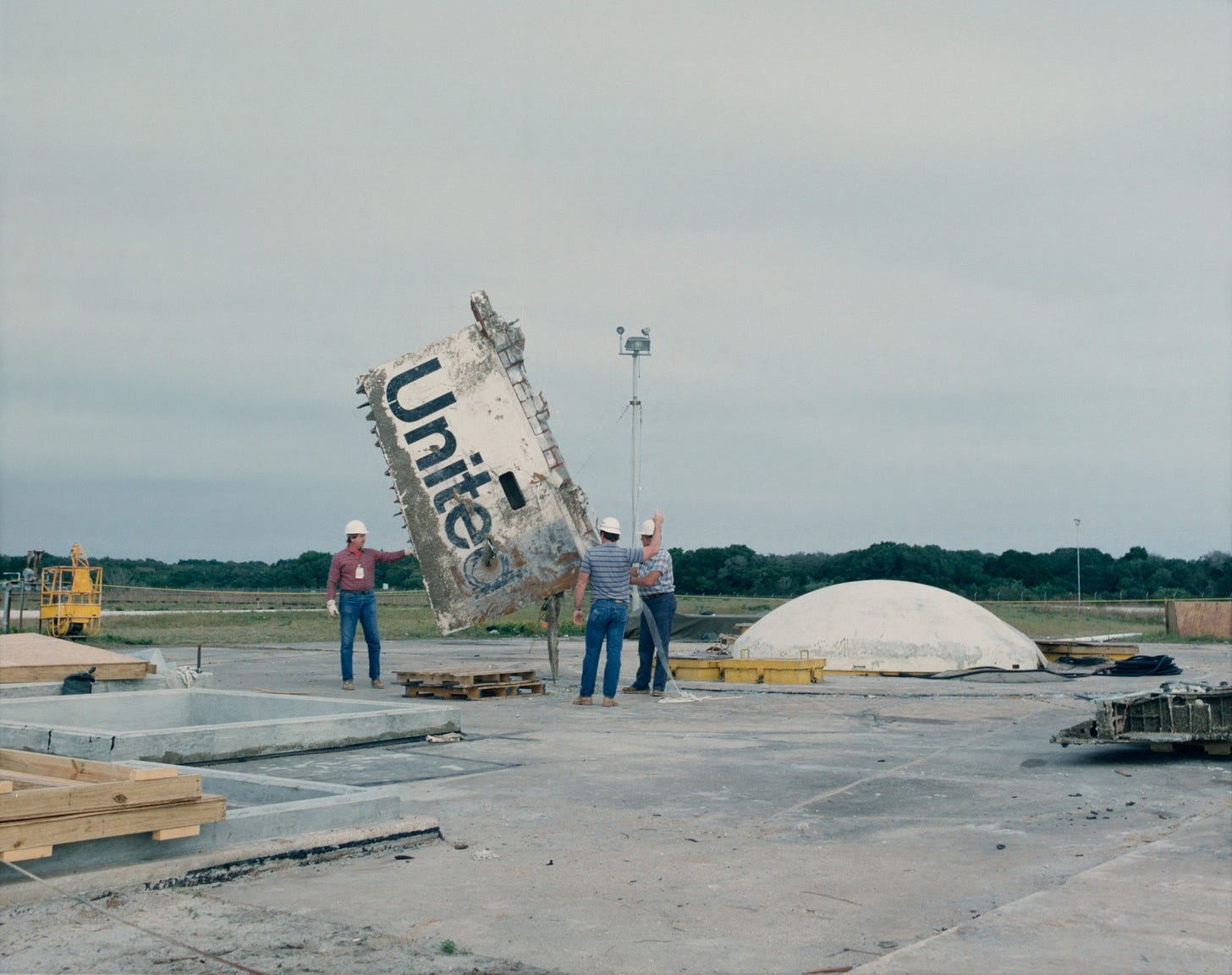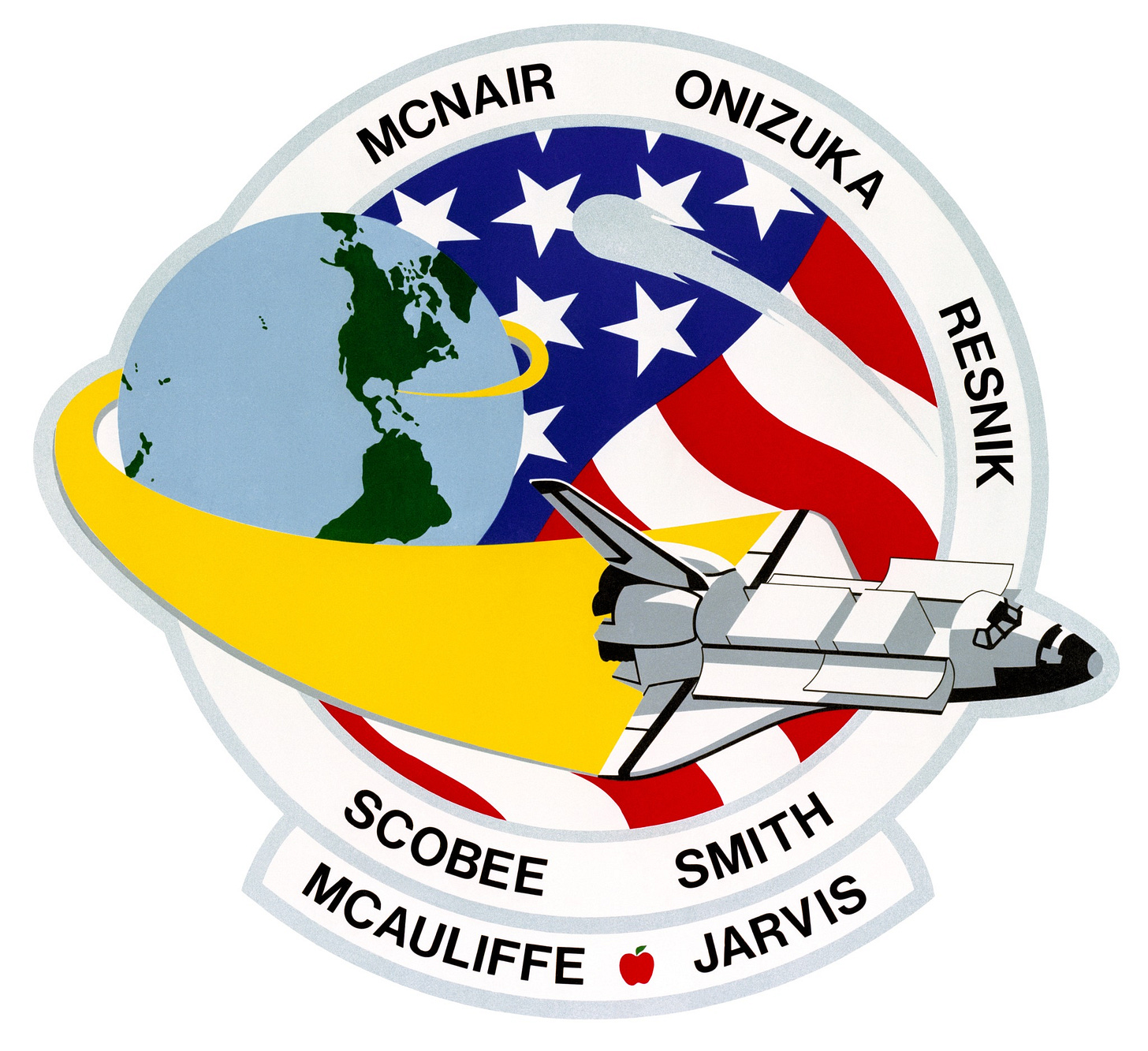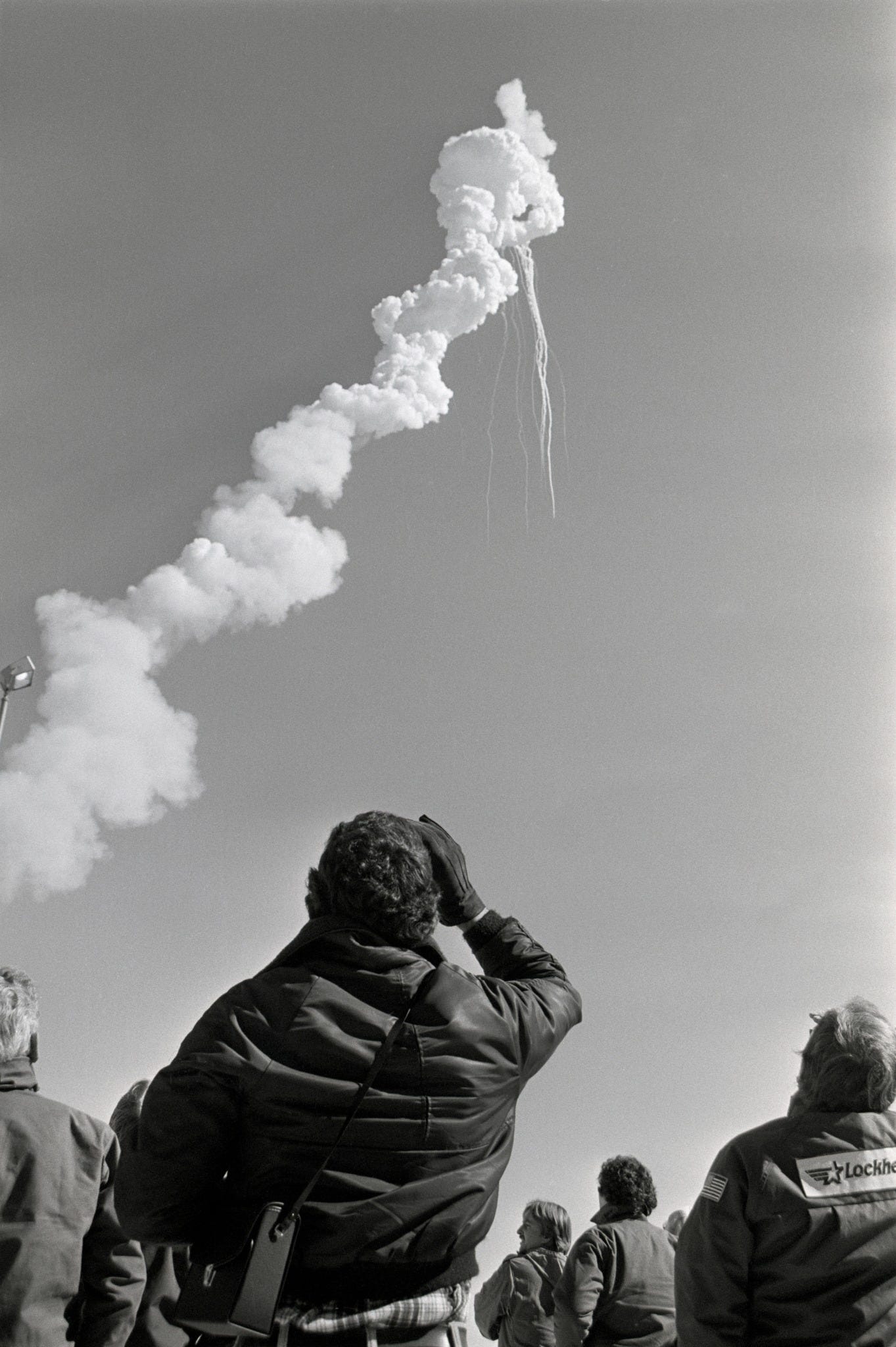Full Throttle is free. Please share and subscribe.
Do you listen to true-crime podcasts? Critics will tell you it’s one of the most popular forms of entertainment in 2022. I think we’ve always been interested in the lurid details of what happened next door or in the next town.
In January 1986 I was working at the CBS affiliate in Seattle, Washington. There was quite a case about to go to trial in Ketchikan, Alaska. A fisherman was charged with the killing of eight people on a boat. My station loved technology. One of the board members of the station owned a private jet and leased it to the station to use to cover news. I flew with a crew on the KIRO Newsjet to cover the trial in Alaska. Or so I thought.
When we landed at the small airport right next to the water at Ketchikan, I went to get a rental car. Once in the car, I turned on the radio. There was breaking news blaring from the speaker. The space shuttle Challenger, on this cold January 28th, had exploded shortly after takeoff. As a space fan, I was in disbelief.
All this is my effort to say that we remember when major events happen by what we were doing at the time. It was the first loss of a space shuttle and it was devastating. We immediately flew back to Seattle so that another reporter could fly to talk to former astronaut Sally Ride about the loss of the first shuttle.
The crew of STS 51L before launch of the space shuttle Challenger. (Credit: NASA)
Today, news came that reminds us of what was lost on that cold January day when an o-ring on one of the solid rocket boosters (SRB) failed and led to a fire and explosion of that SRB and then the entire vehicle. As the shuttle broke up, pieces of debris were scattered over the Atlantic Ocean east of the Kennedy Space Center.
Another section of Challenger has now been found more than 35 years later.
History Channel is planning a six part series on which it found the section of the shuttle Challenger. (Credit: History Channel)
A History Channel team was filming in the waters off the space coast looking for a World War II aircraft. That team found what NASA now says was part of Challenger. NASA says, "Divers noticed a large human-made object covered partially by sand on the seafloor. The proximity to the Florida Space Coast, along with the item’s modern construction and presence of 8-inch square tiles, led the documentary team to contact NASA.” The History Channel says it is a 20-foot section.
NASA Administrator Bill Nelson noted that the tragedy is, “seared in the collective memory of our country,” even 37 years later. ““This discovery gives us an opportunity to pause once again, to uplift the legacies of the seven pioneers we lost, and to reflect on how this tragedy changed us,” he added.
Some of the collected pieces of the space shuttle Challenger in a Florida hangar. (Credit: Getty Images)
The seven crew members on board Challenger included teacher Christa McAuliffe. They have been memorialized and parts of their spacecraft were lowered into a missile silo as a final resting place. NASA says is considering what it will do with this latest piece of Challenger, “that will properly honor the legacy of Challenger’s fallen astronauts and the families who loved them.”
Some of the pieces of Challenger being lowered into an old missile silo. (Credit: Getty Images)
The History Channel Crew was working on series about the Bermuda Triangle. NASA makes it clear this debris was not in the area known as the Bermuda Triangle. "The significance of this large section of Challenger's structure was readily apparent,” said Mike Barnette, who was the dive team leader. The divers discovered the large section in May of this year and contacted NASA in August. NASA’s Mike Ciannelli confirmed the finding, which the History Channel says is the first major discovery of Challenger parts in 25 years. The documentary is scheduled to start airing on November 22.
A portion of the History Channel trailer for its new series. (Credit: History Channel)
Another piece of history has been discovered as NASA is looking to move forward. Kennedy Space Center Director Janet Petro said, “we see that the same love of exploration that drove the Challenger crew is still inspiring the astronauts of today’s Artemis Generation, calling them to build on the legacy of knowledge and discovery for the benefit of all humanity.”
Take a moment and think of the Challenger crew and their families and all we have learned since that tragic day.
(Credit: NASA)
(Credit: Getty Images)
(Cover photo credit: NASA)


